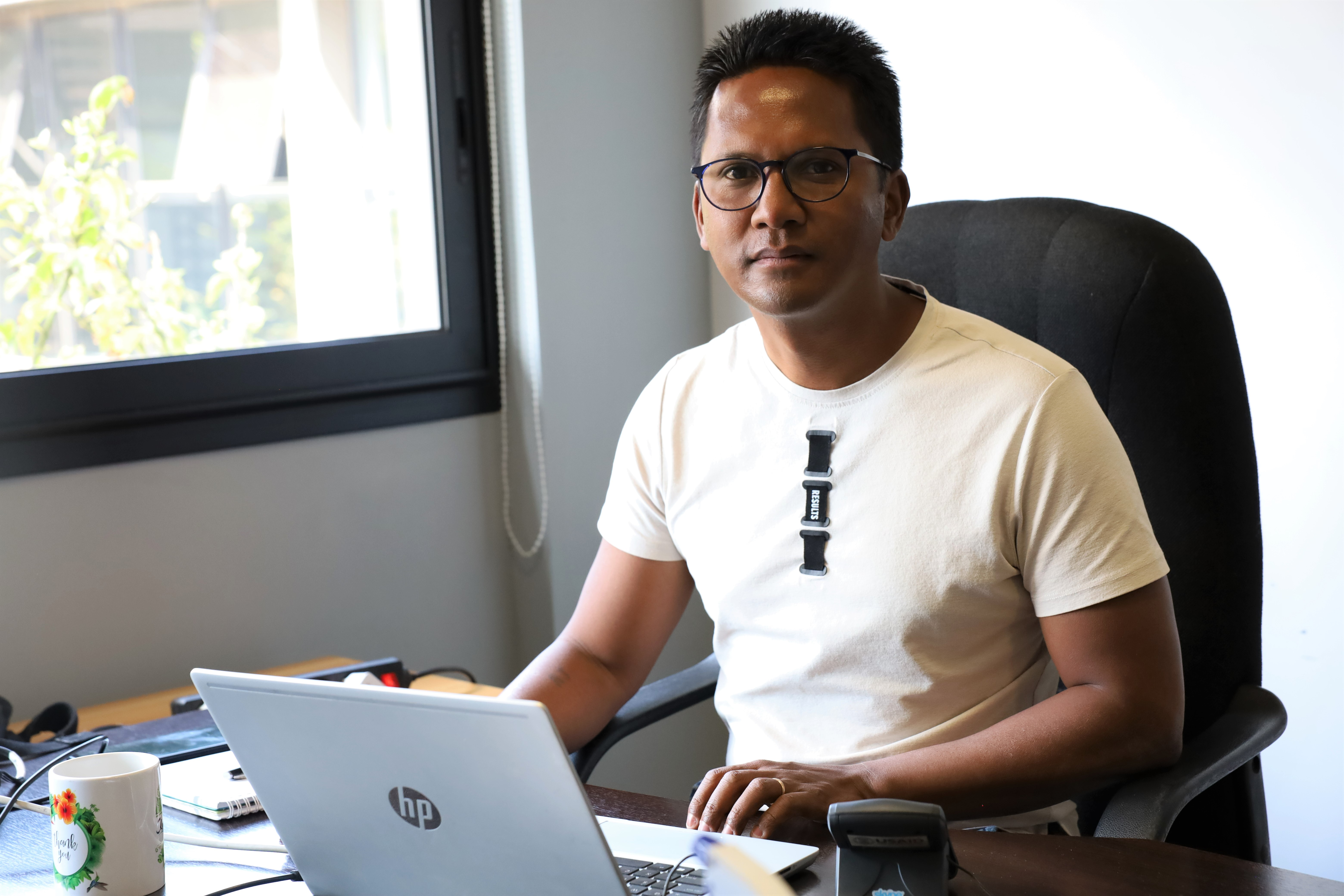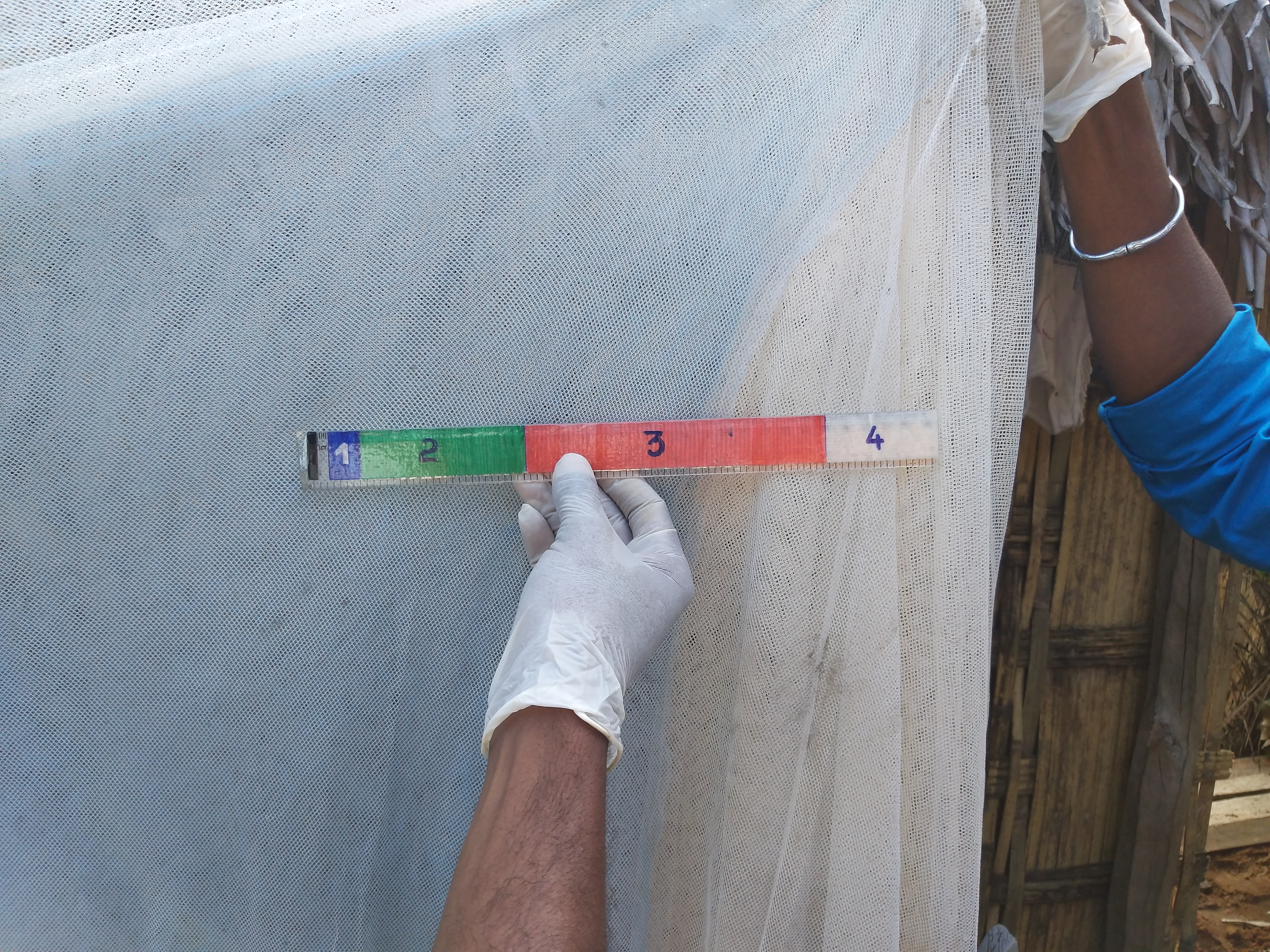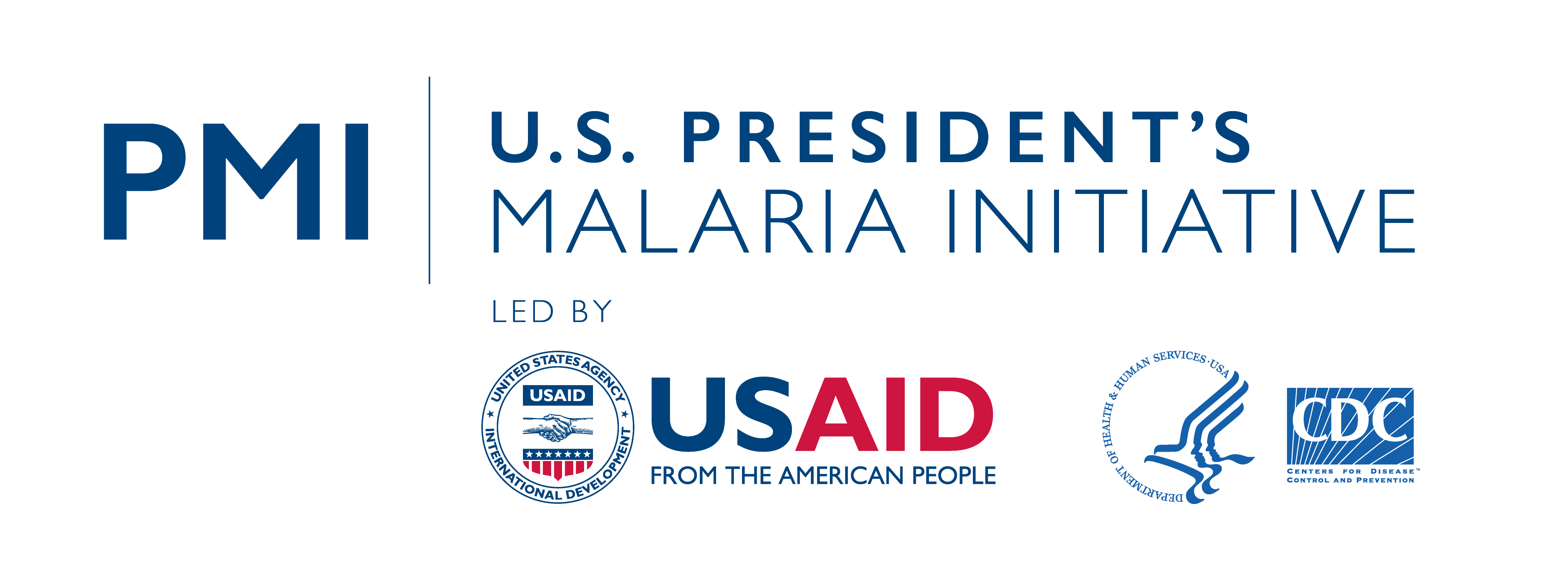Madagascar
Jacky Raharinjatovo, seen below, joined the U.S. President’s Malaria Initiative (PMI) VectorLink Project as a regional research manager, based in Madagascar, in February 2022. A Malagasy citizen, he has a Master’s degree in statistics from the University of Antananarivo, and has been conducting public health research for 18 years. Much of his current work focuses on durability monitoring of insecticide-treated nets (ITNs), but he has deep experience in all kinds of malaria research, including contributing data for the Malaria Indicator Survey and studying malaria case management among private sector outlets. Jacky recently took the time to share more about his work for PMI VectorLink.

Tell us a little bit about your career path.
After university, I started my professional career in research, which aligned with my academic interests. Since 2004, I’ve been working for PSI Madagascar, where I started as a deputy research coordinator. I was part of the first team to pioneer the use of electronic data collection (EDC) in Madagascar, using a personal digital assistant (PDA) to collect data during a household survey related to malaria prevention and treatment. Following the initial success of that initiative, EDC was expanded to other PSI countries, and I was asked to develop a toolkit and document the lessons learned for research colleagues in other countries. The introduction of EDC was a big innovation that helped to improve data quality and provide data faster for malaria surveys. PSI is one of the partners on the PMI VectorLink Project, and when the opportunity arose to serve as a regional research manager for the project, I took it, because malaria remains a major challenge in many parts of the world and research is critical to continue the fight against malaria.
How does your role as regional research manager contribute to the fight against malaria?
I support activities in six countries within the PMI VectorLink Project: Madagascar, Burkina Faso, Burundi, Cameroon, Côte d’Ivoire, and Senegal. I interact regularly with each country team including the chief of party, in-country research agencies, and other partners to monitor progress on all research-related activities, identify challenges, and provide solutions.
Insecticide-treated nets (ITNs) are an important component in malaria control, and durability monitoring—which generates evidence on ITN survivorship, physical durability, and insecticide effectiveness—is a key part of my work with the project. Durability monitoring helps to inform procurement and programmatic decisions for ITN campaigns and continuous distribution. My day-to-day work varies, depending upon any country’s timeline within the durability monitoring process, but can include designing study protocols, supporting training of trainers, and in-person training, conducting remote data quality checks for countries with ongoing field work, data cleaning and data analysis, and writing study reports.
Ultimately, my job is to provide high-quality evidence to governments, donors, and manufacturers of ITNs to support their decision-making regarding vector control. This can include data being used to inform social and behavior change communication (SBC) messages regarding ITNs. As a member of the dynamic PMI VectorLink team, I contribute to the saving of lives indirectly through the surveillance of ITN durability.
Why is studying the effectiveness of ITNs so important?

The goal for malaria intervention programs is to reduce malaria-related mortality and morbidity. Malaria control programs generally combine prevention and case management, which are complementary and work together. PMI VectorLink’s focus is controlling malaria vectors through the use and study of ITNs, indoor residual spraying (IRS), and entomological monitoring. In terms of ITNs, the insecticides used on them are needed to repel mosquitoes and to prevent mosquito bites. The effectiveness of these insecticides decreases over time, as demonstrated by the surveillance of the durability monitoring study conducted in PMI VectorLink countries. Measuring ITN durability like this provides evidence to donors and governments on the effectiveness of ITNs, which helps them to make decisions on where to prioritize their malaria control efforts and which nets to use and helps insecticide manufacturers improve their products’ efficacy to kill and repel mosquitoes.
The evidence generated through durability monitoring contributes to making ITNs more durable, which helps in the efficient use of funds. The longer the lifespan of ITNs, the more resources we save for other priorities.
What do you find most challenging and rewarding about your job?
After several years of implementation, the biggest challenge is data use. There is often no clear action plan at the community level once data has been collected and analyzed. When there is a plan, monitoring is often lacking. In addition, the timeline between data collection, analysis, developing a data dissemination and action plan, and budgeting implementation of activities takes too long in relation to the timeline of the research activity itself.
For me as a researcher, I recommend the use of data at all levels—at the highest level among governments, donors, the Ministry of Health, and at the regional level within communities that collaborated during data collection. The government should be the first to use data to adjust strategies. Seeing my work used in an official document, such as a proposal or a national strategic plan, or when it is published in an official journal, makes me very happy and is rewarding.
What do you wish other people knew about the project?
People should know that our ITN mass distribution campaigns are supported by a three-year longitudinal prospective study which includes a net durability study to evaluate how long nets last, their physical integrity, and insecticide effectiveness. ITN-related decisions in many countries—including net characteristics such as the type of net and chemical content, as well as SBC messages such as recommended frequency for washing nets, type of soap used during washing, and drying method—are based on the evidence derived from the net durability study.
What are your hopes for the future in the fight against malaria?
I am hopeful that malaria will be eliminated from Madagascar in the next 10 years. In the short term, I think that malaria morbidity and mortality will be significantly reduced within the next three to five years, and then people will be able to live and work without the fear of contracting malaria. I believe that there will be a widely available, cost-effective, and efficacious malaria vaccine.


